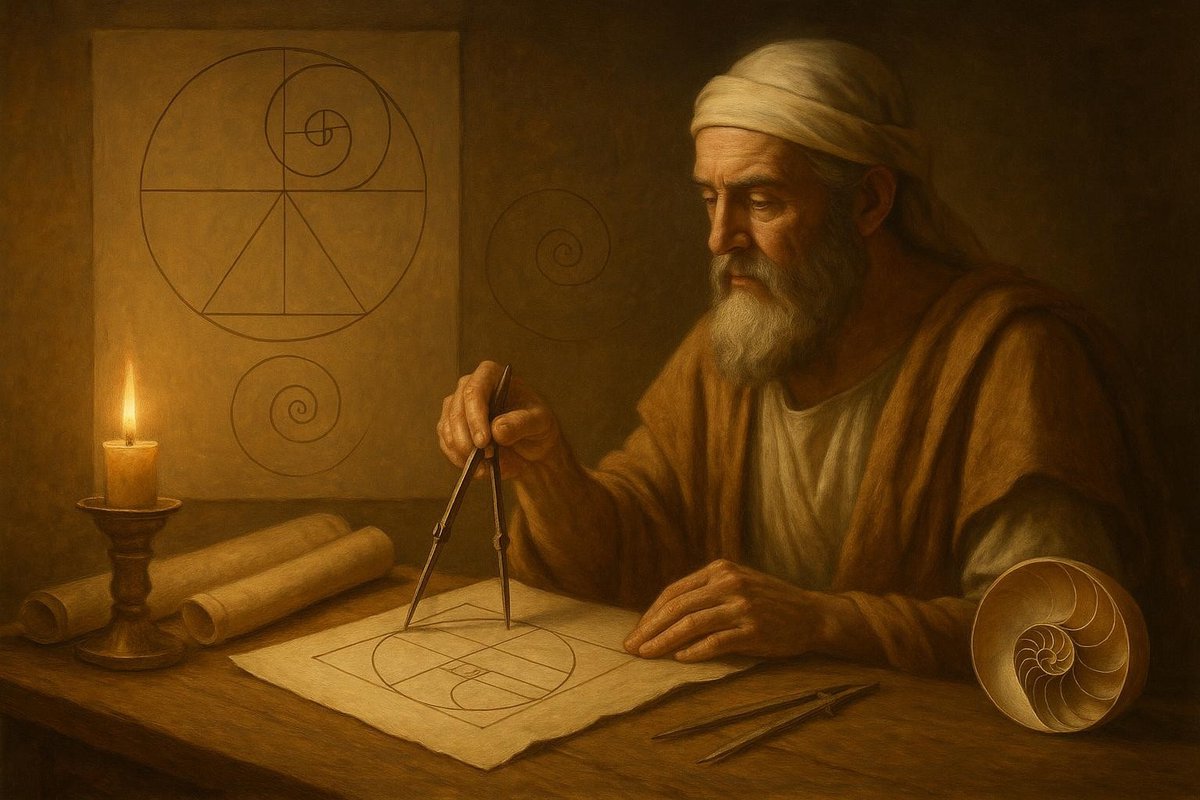
Have you ever marveled at the harmony found in a nautilus shell or the spiral of galaxies? These natural phenomena often hint at a mathematical wonder known as the Golden Ratio. This special proportion, roughly 1.6180339887, has captured the imaginations of mathematicians, artists, and architects for centuries. Let’s embark on an intellectual journey to uncover how this fascinating concept was discovered and why it has remained a source of intrigue throughout history.
Hypothesis & Context: Unraveling an Ancient Enigma
The origins of the Golden Ratio trace back to the time of the ancient Greeks, who were fascinated by the idea of perfect proportions. Pythagoras, a name synonymous with mathematical breakthroughs, was among the first to ponder over harmonious relationships in numbers and dimensions.
- Pythagoras believed that numbers held mystical properties.
- The Greeks explored beauty through mathematical means.
- They sought to understand harmony in music, art, and architecture.
Interestingly, it wasn’t just mathematics but also philosophy that drove this quest. Many people believe that the Greeks saw numbers as the language of the universe, a way to decode the mysteries around them. This cultural milieu laid the groundwork for what would eventually become the Golden Ratio.
Setup & Method: A Geometric Expedition
The real intrigue began with Euclid, who played a pivotal role in formalizing the concept of the Golden Ratio. In his seminal work, “Elements,” Euclid described a fascinating way to divide a line into two unequal parts, such that the ratio of the whole to the larger part is the same as the ratio of the larger part to the smaller.
- Start with a line segment.
- Divide it into two parts, A and B, such that (A + B)/A = A/B.
- This creates the Golden Ratio.
Euclid’s method was more than a geometric exercise; it was a gateway to understanding proportionality. No wonder this became a cornerstone not only in mathematics but also in the study of aesthetics. As time went on, this notion of balance became essential to architects and artists striving for beauty.
Results & Reactions: Beyond Mathematics
What happened next was extraordinary. The Golden Ratio began to appear in unexpected places, from the pyramids of Egypt to the Parthenon in Athens. This proportion seemed to resonate universally, sparking debates about its true significance.
- Some argued it was a divine ratio.
- Others believed it was a mathematical coincidence.
- It inspired countless theories about its use in art and nature.
Fibonacci, for instance, discovered that the sequential summation of numbers (the Fibonacci Sequence) approached the Golden Ratio. This revelation further fueled the allure of this proportion, leading to its integration into Renaissance art and beyond. What began as a mathematical curiosity had expanded into a cultural phenomenon.
Implications: A Timeless Fascination
The Golden Ratio continues to captivate minds today, symbolizing a bridge between the abstract and the tangible. It invites us to explore the deep connections within the natural world and our creations.
- Used in designing buildings and artworks.
- Found in patterns of leaves and flowers.
- Continues to inspire new mathematical insights.
This journey from ancient Greece to the modern era illustrates the enduring power of mathematical beauty. It reminds us that the pursuit of knowledge is not just about answers but also about questions that inspire and ignite our curiosity.
What have we learned? The Golden Ratio is more than a number; it’s a testament to our relentless quest to find order in chaos, to see beauty in simplicity, and to connect with the world—and each other—through the universal language of mathematics.
Fuel Someone Else’s Curiosity
If you found this exploration of the Golden Ratio intriguing, why not share it with others? Encourage them to dive into the wonder of mathematics and explore the world through numbers, patterns, and proportions. Let’s keep the conversation going and inspire others to see the elegance hidden in the everyday.

Leave a Reply